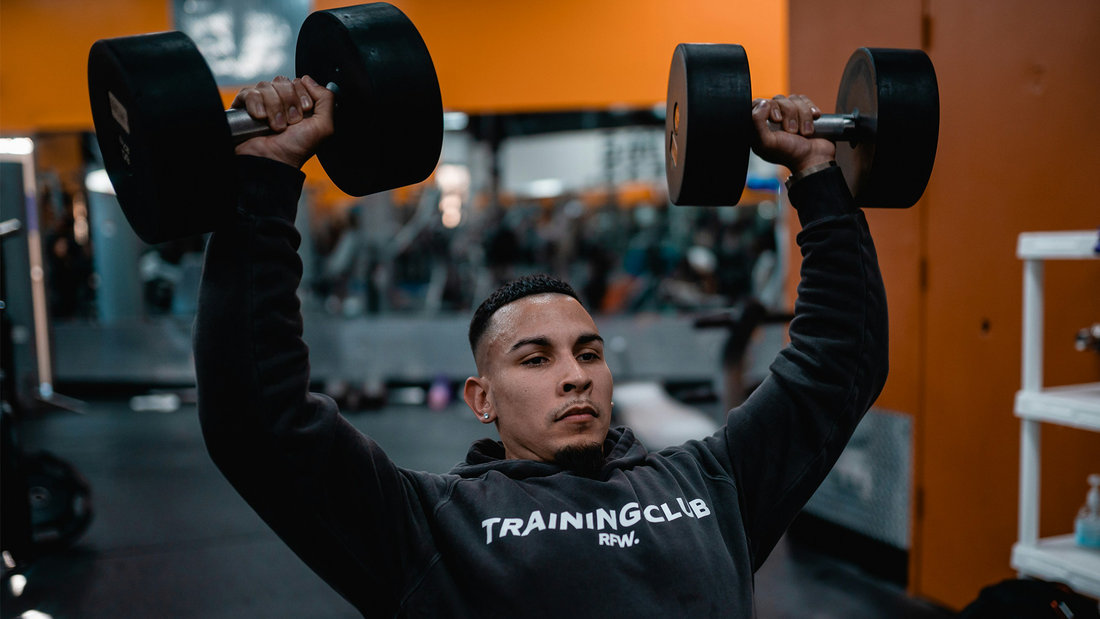

Delt Workouts: 5 Exercises to Help You Get Stronger Deltoid Muscles
Weight lifting and resistance training isn’t just about aesthetics. Having strong muscles makes your body more resilient and improves your quality of life. Certain muscles — like those around the joints — play a huge part in overall health, injury prevention, and healthy aging.
The deltoids are one of these incredibly important muscle groups. With focus on strengthening your deltoid muscles, you can take your wellness to the next level.
All About the Deltoid Muscles
Your deltoid muscles are large, triangular muscles in your shoulder. The muscle is what gives shoulders their characteristic rounded look.
The deltoid muscles allow you to lift your arm and move it in all different directions. Swimmers and pitchers strengthen their deltoid muscles to protect the shoulder and bring more power into their repetitive “overhead” movements.
This muscle has three parts: anterior, lateral, and posterior. Moving your arm forward activates the anterior muscles. The lateral deltoid has its time to shine when moving your arm out to your side. You activate the posterior deltoid when you reach behind you.
Since this muscle is so big, it plays a key role in the body’s ability to move. Shoulder stability and motion are the name of the game for the deltoids. Strong deltoids keep your shoulders healthy and working properly.
Many people experience shoulder injuries every year due to weak shoulder muscles or improper arm movements. Since the shoulder joint is very mobile, it is more susceptible to injury than other muscles. When your muscles are weak, you are even more susceptible.
Shoulders also receive a lot of wear and tear as we age, which can make joints stiff or achy, sometimes leading to arthritis. Shoulder strength and stability is of particular concern for people young and old.
Achieving Stronger Deltoid Muscles
The deltoids are a great place to start with upper body strength-training. Since the muscle group is so important, choosing deltoid exercises will keep you strong and healthy.
We often use our anterior deltoids (the “front” deltoids) in everyday activities, so they get a lot more incidental focus. When we choose deltoid-strengthening activities, we give the lateral and posterior deltoids more attention, thus improving our mobility overall.
Ready to feel the burn? These 5 delt workouts will help you get stronger deltoid muscles.
Shoulder Press
The shoulder press is the quintessential deltoid workout. Sometimes called the “overhead press” or “military press” can be done with dumbbells or a barbell, standing or seated. The wide range of options makes this an adaptable workout for anyone at any level of fitness.
With the shoulder press you are primarily working your anterior and lateral deltoid muscles. This is also a very well-rounded exercise; depending on your positioning, your whole body might get involved!
To do the shoulder press while standing, make sure you are in an upright position with an activated core and your hips are lined up with your ribs and shoulders. Using an overhand grip on your barbell or dumbbells, press (or push) the bar over your head until your arms have only a microbend. Then, slowly and with control, lower the barbell or dumbbells back down.
If you are just starting out, 2-3 sets of ten are a good place to start. As the exercises become easier, you can increase the reps or the weight. Just make sure you maintain your form. If you are unable to keep correct form, then you need to back off.
Rear Deltoid Fly
The posterior deltoids are often neglected. The rear deltoid fly will mitigate this problem and bring much-needed strength to those muscles! Improving your posterior deltoid strength can also have benefits for your posture. Anyone who struggles with having good posture will know how important this is.
This exercise is easy to do at home. All you need are a pair of dumbbells. Stand with your feet hip-distance apart and bend your knees slightly so you have a good base. Hinge at your hips until you are at almost a ninety-degree angle. Start with one dumbbell in each hand and your hands hanging in front of you. Then “spread your wings” and extend your arms to the side. With a slight bend in your elbow, achieve a near wingspan before returning your arms in front of you.
Repeat 3 sets of 10. If the dumbbells are too much for you when starting art, just practice the movement without the dumbbells.
Lateral Raises
This exercise will strengthen your lateral deltoids. We recommend using dumbbells for this workout, but you can also use a cable or resistance band.
Stand with your feet hip-distance and a dumbbell in each hand. Activate your core and then lift your arms out to the side. With control, lower your arms.
It’s likely that lateral raises might feel difficult, especially because the lateral deltoids are not used much in everyday life. With that in mind, know that the challenge is part of the fun. You might just need to do fewer sets or fewer reps per set. Like with every exercise, you don’t want to compromise form as it could lead to injury.
Upright Row
The upright row is one of the most popular deltoid workouts. In this workout, you will focus on strengthening your lateral deltoid muscles, as well as another shoulder muscle: the trapezius.
Like with the other workouts, this can be completed with a barbell or dumbbells. Just use what you have access to.
To complete an upright row, stand with your feet shoulder-width apart and hold the dumbbells with your palms facing your body. Then, lift the dumbbells to collarbone height. The motion should be driven from the elbows, with the elbows lining up with the shoulders at the top of the movement.
Repeat this for 10 reps and complete 3 sets.
Frontal Raises
The frontal raise, which works your anterior deltoids, starts similarly to the upright row. Stand shoulder-width apart, activate your core, and hold a dumbbell in each hand. Instead of driving up from the elbows, you will keep your arms straight and raise them in the air in front of you so they line up with your shoulders.
Return to rest with control and repeat.
This is a great workout to build stability in the shoulder and improve your shoulder mobility.

![zf-w-[168px] zf-h-[40px]](http://zozofit.com/cdn/shop/t/15/assets/logo-desktop.png?v=117713855448369080381753069598)


